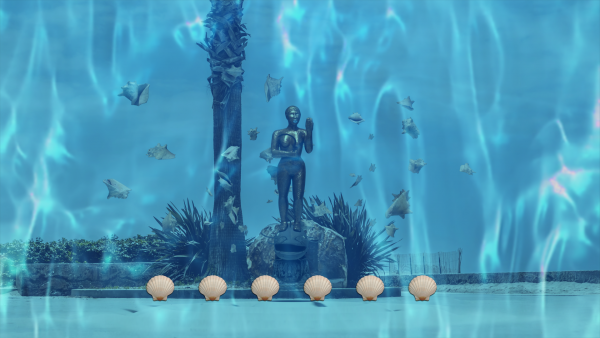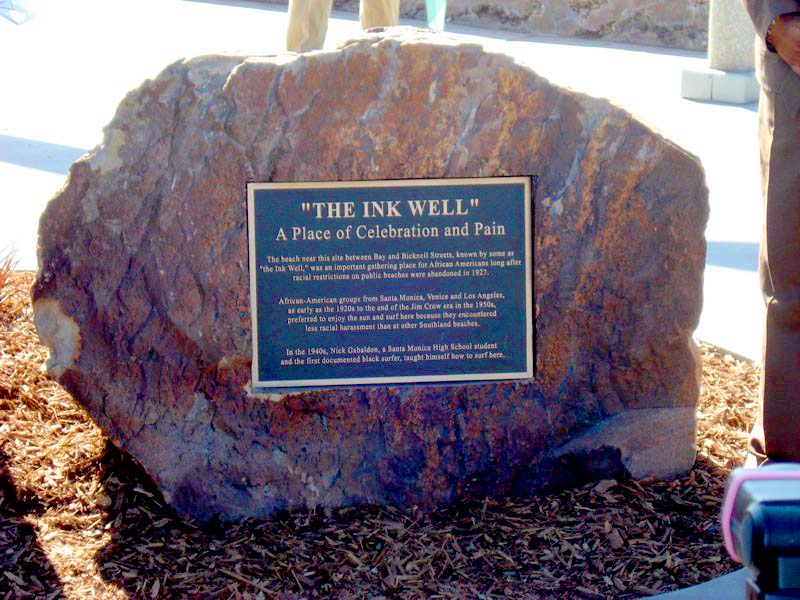LACMA × Snapchat: Monumental Perspectives is a multi-year initiative that brings together celebrated artists and leading technologists to create augmented reality monuments exploring histories of Los Angeles communities. In consultation with community leaders and historians, the initiative’s third and final collection of artists, Victoria Fu, Yassi Mazandi, Rashaad Newsome, Rubén Ortiz Torres, and Alison Saar, have used the lens of collective ancestral memory to examine the individual and communal legacies we leave today and have created works designed to be experienced at locations across Los Angeles with Snapchat’s camera.
Join artist Alison Saar and others at Santa Monica Beach on Saturday, February 10, for Healing through Dance: Rise, a movement workshop that connects with Saar's AR monument Rise, which you can learn more about below.
Artist Alison Saar’s style encompasses a multitude of personal, artistic, and cultural references that reflect the plurality of her own experiences. Her sculptures, installations, and prints incorporate found objects including rough-hewn wood, old tin-ceiling panels, nails, shards of pottery, glass, and urban detritus. The resulting figures and objects become powerful totems exploring issues of gender, race, heritage, and history.
Santa Monica’s Bay Street Beach Historic District was Saar’s chosen site for her augmented reality lens. Ocean Park was established in 1908 and became the most important gathering place for African American beachgoers in Los Angeles. Though Santa Monica’s beaches were not legally segregated, most of the space along the waterfront was taken up by discriminatory beach clubs. Bay Street Beach became a safe place for the African Americans who gathered there, and became known as “the Inkwell” because of the color of the beachgoers’ skin.
Saar’s site at “Inkwell Bay” not only resonates historically, but reflects the artist’s personal family history. She recalls photos of her family visiting the beach, enjoying the sun and the water without fear of harassment.
Much like the Bay Street Beach, Saar’s augmented reality monument Rise creates space for the viewer to remember those who were lost and those who survived the abuses of the colonization and commodification of women—specifically women of Black, Brown, and Indigenous heritage. Rise embodies Saar’s response to the attack on reproductive rights and threats made to the sovereignty of Black, Brown, Indigenous, and female bodies, and serves as a catalyst for conversation and dialogues which will bring these issues to light, inspiring compassion and activism.
The rollback of Roe v. Wade in 2022 speaks to the moment in which Saar started creating her AR lens. Her work traditionally features three-dimensional mediums, and she began sculpting the goddess Yemaya out of wood in her studio. Yemaya is a mother spirit, the water spirit of the African diaspora, merciless to those who stand in her way to serve and to soothe the drowned, lost to sea from the middle passage, from the silted souls of Katrina to present victims of the perils of migration. She brings the healing powers of cooling waters, rules over reproductive health, and encourages self-love and creativity.
In Saar’s lens, Yemaya is surrounded by swarming catfish, doves, and cowrie shells, wields a cane knife, and blows on a conch shell, calling women to resist the forces that want to control their freedom and reproductive rights, especially women of color who have historically had their bodies colonized.
Rise is accompanied by an excerpt of the poem “Chant for the Waters and Dirt and Blade”¹ read and written by author Desiree C. Bailey:
I begin again I begin
in black smoke washing
the island barreling across fields
into sea
what of country of nation
of child’s palm in my pal then
leaping through small streams
what do I know
but my body now my body making
itself free onward onward
toward a beginning in one hand
my machete in the other the sea horn
the conch blaring the notes of my song
Bailey’s publication is an in-depth exploration of memory, loss, and grief across the African diaspora. The collection begins in the Haitian Revolution with a young woman who is guided to freedom by Yemaya. Saar’s decision to echo the strength of the goddess in both audio and visual components of her work underscores the divinity and elegance of a figure whose presence is still needed during the contemporary onslaught against the female body.
Her poem is followed by original music played on the conch shell by Avila Santo.
1. Adapted from What Noise Against the Cane by Desiree C. Bailey, published by Yale University Press, © 2021 Yale University Press




